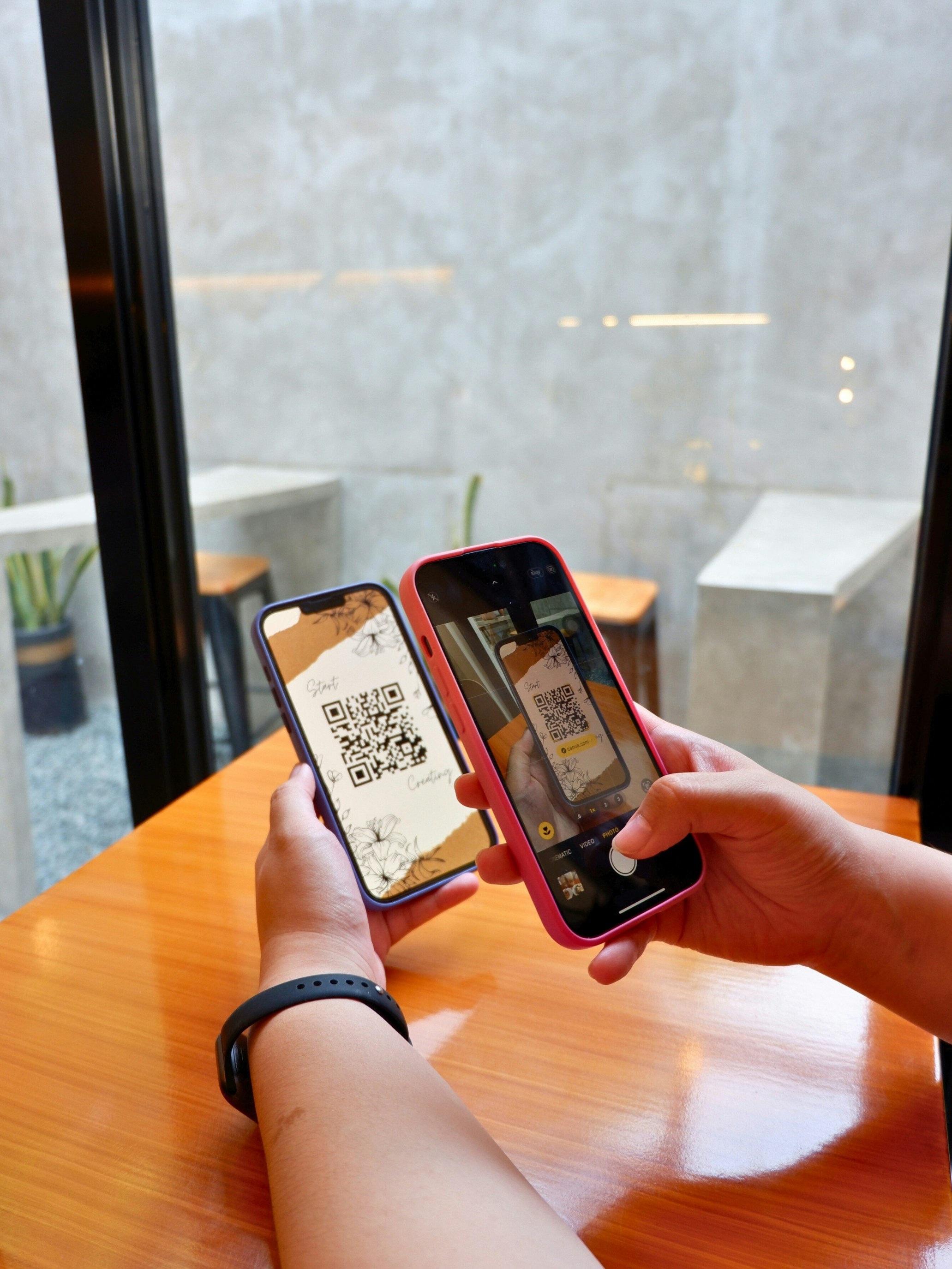Introduction to Open Source Barcode Tools
Open source barcode tools have increasingly become imperative in a variety of industries, offering versatile solutions for barcode generation and scanning. These tools empower businesses to efficiently manage inventory, enhance retail operations, and streamline supply chain processes. The use of barcode technology facilitates the automatic identification of products, making it easier to track items as they move through different stages of distribution and sales.
The significance of open source barcode tools lies in their ability to provide cost-effective solutions without compromising quality. Organizations can utilize these resources without incurring significant licensing fees, allowing for better budget management. This aspect is particularly beneficial for small and medium-sized enterprises that may not have extensive capital to invest in proprietary software. By leveraging open source tools, these businesses can allocate resources elsewhere while still maintaining high operational efficiency.
Flexibility is another key advantage of open source barcode tools. Users have the freedom to modify, enhance, and adapt the software to meet specific requirements. This adaptability is crucial, especially for businesses with unique operational processes or those operating in niche markets. Furthermore, the strong community support associated with open source projects fosters collaboration and innovation, enabling users to share insights, troubleshoot, and implement improvements collectively.
In summary, open source barcode tools present a variety of benefits that make them essential for modern businesses. Their economic viability, customization options, and strong community backing promote not just better inventory management but also improved customer satisfaction across sectors. The adoption of these tools can significantly contribute to optimized operations and increased productivity in an increasingly competitive landscape.
Understanding Barcode Types
Barcodes are versatile tools widely utilized across various industries to encode information in a machine-readable format. They are predominantly categorized into two main types: 1D and 2D barcodes. Each type possesses unique characteristics and serves different purposes, making it crucial to understand their distinctions when selecting the appropriate barcode for a project.
1D barcodes, also known as linear barcodes, consist of vertical lines and varying spaces that represent numerical or alphanumeric data. Common examples include the Universal Product Code (UPC) and Code 128, frequently utilized in retail settings to track inventory and streamline checkout processes. These barcodes are limited to encoding a small amount of information, typically a product identifier, which is sufficient for most retail applications. Due to their simplicity, 1D barcodes excel in environments where fast scanning is necessary, such as supermarket checkout lines.
In contrast, 2D barcodes are capable of storing significantly more data, as they use a matrix of dots or squares to represent information. One of the most recognized examples of 2D barcodes is the Quick Response (QR) code, which has gained immense popularity in recent years. QR codes are often employed in marketing campaigns, product packaging, and ticketing systems, allowing users to quickly access websites or additional information by scanning with a smartphone. Their ability to store URLs, contact details, and more makes them particularly versatile for consumer engagement.
In addition to QR codes, other types of 2D barcodes include Data Matrix and Aztec codes, which are frequently used in logistics and the healthcare sector. Understanding these barcode types and their applications can aid businesses in implementing the right barcode solution tailored to their operational needs, maximizing efficiency and productivity.
Key Features to Look for in Barcode Tools
When selecting an open source barcode tool for your projects, several essential features warrant consideration to ensure that the tool meets your specific needs effectively. Firstly, ease of use is paramount; the interface should be intuitive and user-friendly, enabling users with varying technical expertise to navigate the tool effortlessly. A straightforward setup process can significantly reduce the time required for implementation and help teams to adopt the tool swiftly.
Customizability is another critical feature; the ideal barcode tool should allow users to tailor barcode designs to fit diverse applications and branding requirements. This includes options for modifying size, color, and format to ensure that the generated barcodes align with project specifications. An open source barcode tool that offers flexibility in design also enhances usability across different industries.
Integration capabilities with existing systems are crucial for seamless operations. The barcode tool should easily integrate with databases, inventory management systems, or e-commerce platforms to facilitate smooth data flow. Ensuring compatibility with various software environments not only streamlines processes but also enhances efficiency in tracking and managing products through barcodes.
Support for multiple barcode formats is essential as well. Depending on your project’s requirements, a versatile tool that accommodates numerous barcode types, including QR codes and various linear barcode formats, will provide greater functionality and adaptability.
Lastly, a strong emphasis should be placed on thorough documentation and community support when selecting a barcode tool. Comprehensive user manuals, example projects, and an active community forum can prove invaluable for troubleshooting and enhancing user experience. The availability of such resources often indicates the reliability and robustness of the tool, providing users with confidence in their choice.
Best Open Source Barcode Tools
When considering open source barcode tools, several options stand out due to their functionality, ease of use, and broad compatibility. These tools not only facilitate the generation and scanning of various barcode formats but also offer unique features that cater to diverse project needs. Below are some of the top open source barcode tools available today.
First on the list is Zint Barcode Studio. This tool excels in generating high-quality barcodes across a variety of formats, including QR codes and Code 128. Its user interface is straightforward, making it suitable for both novices and experienced users. Zint supports multiple operating systems, including Windows, Linux, and macOS, which enhances its accessibility for a wider audience.
Another notable tool is Barcode4J, which is a flexible library for generating barcodes in Java applications. It supports a significant range of barcode formats and can be easily integrated into Java projects. Barcode4J’s unique feature is its capability to produce high-quality barcodes that can be incorporated directly into graphics or printed documents, making it a valuable asset for developers looking to implement barcodes seamlessly.
ZXing (Zebra Crossing) is another powerful option and is particularly well known for its barcode scanning capabilities. This library supports numerous barcode formats and is widely used in mobile applications due to its performance and adaptability. ZXing is available for multiple platforms, including Android, which makes it ideal for developers creating mobile solutions.
Lastly, libdmtx offers a specialized focus on Data Matrix barcode decoding. This tool is particularly useful for users who require precision in capturing Data Matrix codes, often found in asset tracking and inventory management systems. Its flexibility and lightweight architecture make libdmtx an excellent choice for dedicated applications.
These open source barcode tools not only streamline the process of integrating barcodes into various projects but also cater to a range of specific needs, offering developers robust options for ensuring accuracy and efficiency in their applications.
Installation and Setup Guide
Setting up open-source barcode tools requires a clear understanding of the prerequisites, installation methods, and initial configuration steps. To begin, it is essential to ensure that you have a compatible operating system and all necessary dependencies installed. Most tools in this category are developed for platforms such as Windows, macOS, and Linux. Therefore, ensure your system meets these requirements before proceeding.
For many open-source tools, the most straightforward method of installation is via package managers. If you are using Linux, tools like APT (for Debian-based systems) or YUM (for Red Hat-based systems) often simplify the process. To install a barcode tool through APT, open your terminal and type sudo apt-get install barcode-tool-name, replacing “barcode-tool-name” with the specific name of the tool you wish to install. Mac users can utilize Homebrew, while Windows may require tools like Chocolatey for similar functionality.
If you plan to install the barcode tool from the source code, download the latest version from the official repository, typically found on platforms like GitHub. Unzip the archive, navigate to the folder in the terminal, and follow the installation instructions provided in the README file. Common commands include ./configure, make, and make install.
After installation, it is vital to configure the tool properly. This often involves editing configuration files or using command-line arguments for initial setup. Each tool may have unique requirements, such as setting up the database or configuring specific barcode generation settings. Refer to the official documentation for detailed guidance on this process.
In case of any issues, consult the troubleshooting section of the documentation or community forums. Screenshots and user feedback can also provide insight into common installation hurdles. By following these steps, users can ensure a smooth installation and setup process for their chosen open-source barcode tool.
Creating and Scanning Barcodes
In the realm of modern technology, barcodes play a critical role in streamlining various processes, from inventory management to retail transactions. Utilizing open-source barcode tools can significantly enhance your projects’ efficiency. To begin creating barcodes, one should first select a suitable open-source barcode generator. Popular options include ZXing (Zebra Crossing) and Barcode4J. These tools allow users to generate various barcode formats, such as QR codes, Code 128, and UPC.
The creation process typically starts with entering the desired data into the generator. From there, users can customize the appearance of the barcode by adjusting parameters like size, color, and orientation. This flexibility ensures that the barcode aligns with branding requirements or user preferences. Additionally, many tools offer the capability to export the barcode in multiple file formats, accommodating various applications and platforms.
Once a barcode is generated, the next crucial step is scanning. Scanning barcodes converts the visual representation back into usable data, facilitating quick retrieval and processing. Open-source libraries such as ZXing and ZBar provide scanning functions that can be integrated into applications or embedded within mobile devices. To use a scanner, simply point the device’s camera at the barcode, and the software will automatically decode the information, allowing users to access details instantly.
Moreover, integrating barcode scanning into broader systems is streamlined with these open-source tools. For instance, linking scanned barcodes to inventory management systems can help track products in real-time, enabling better resource allocation and minimizing human error. In conclusion, mastering the creation and scanning of barcodes using open-source tools can significantly enhance project management and operational efficiency across various sectors.
Case Studies of Successful Implementations
Open source barcode tools have revolutionized various industries by providing cost-effective solutions to complex problems. To illustrate their effectiveness, we highlight three significant case studies where organizations implemented these tools successfully, showcasing the benefits achieved.
The first case study involves a retail company facing inefficiencies in inventory management. This organization struggled with tracking inventory levels across multiple locations, leading to stock outs and overstock situations. In response, they adopted an open source barcode tool that facilitated real-time inventory tracking. By integrating this solution into their existing systems, they streamlined their inventory processes. As a result, the company reported a 30% reduction in inventory-related costs and improved customer satisfaction due to better product availability.
Another compelling example comes from the healthcare sector. A hospital was grappling with the challenge of managing patient records and medication administration accurately. To address these issues, they implemented an open source barcode scanning system for patient identification and medication tracking. This solution significantly minimized medication errors and expedited patient processing times. Post-implementation evaluations revealed a 25% decrease in medication-related incidents, enhancing patient safety and care quality.
Lastly, a logistics firm faced challenges in package tracking, often losing shipments and experiencing delays. To remedy this, they adopted an open source barcode tool tailored for logistics management. By utilizing barcode labels on shipments, they were able to enhance visibility throughout the shipping process. This real-time tracking led to a 40% improvement in shipment accuracy and delivery times, solidifying the firm’s reputation for reliability in the logistics industry.
These case studies demonstrate that open source barcode tools not only resolve specific operational challenges but also lead to substantial improvements in efficiency, accuracy, and customer satisfaction across various sectors.
Community and Support Resources
Engaging with community and support resources is an essential aspect of optimizing the use of open source barcode tools. Various platforms have been established to provide assistance, facilitate collaboration, and encourage contributions from users and developers alike. One of the premier venues for support is GitHub, where many open source projects are hosted. Here, users can report issues, submit feature requests, and even contribute code to enhance barcode tool functionalities. The collaborative nature of GitHub allows developers to track changes in real-time and engage directly with community members, fostering a sense of shared purpose.
Online forums and discussion boards are another vital resource for users. Platforms like Stack Overflow and dedicated technology forums provide a space where individuals can ask questions, share experiences, and exchange solutions related to open source barcode tools. These community-driven sites not only facilitate problem-solving but also create opportunities for mentorship and knowledge sharing among users at all skill levels. Whether seeking advice on troubleshooting or exploring new features, participants can benefit from a vast pool of expertise.
Additionally, comprehensive online documentation and tutorials play an indispensable role in the support structure of open source barcode tools. Detailed guides, FAQs, and comprehensive manuals offer users essential insights into installation, configuration, and advanced functionalities of the tools. Moreover, many projects encourage users to contribute to documentation, enriching it with practical knowledge and real-world use cases.
Ultimately, the ecosystems surrounding open source barcode tools thrive on user participation. By engaging with community resources, you not only enhance your own skills but also contribute to the ongoing development and improvement of these tools, benefiting the broader community and advancing the field of barcode technology.
Conclusion and Future Trends in Barcode Technology
In conclusion, the exploration of open source barcode tools reveals their pivotal role in enhancing various projects across different industries. These tools not only provide a cost-effective solution for barcode generation, scanning, and management but also facilitate customization, allowing developers to tailor applications according to their specific needs. As businesses increasingly rely on efficient inventory management, asset tracking, and customer engagement strategies, the adoption of open source barcode solutions continues to grow.
Looking forward, several trends are poised to shape the future of barcode technology. The integration of mobile devices for scanning purposes stands out as a major advancement. With the widespread use of smartphones equipped with camera capabilities, users can easily scan barcodes without the need for specialized equipment. This trend fosters greater accessibility and convenience in various applications, from retail to logistics.
Another trend to watch is the growing integration of barcode technology with the Internet of Things (IoT). As smart devices proliferate, barcodes will increasingly serve as the bridge between physical products and digital information, enabling real-time tracking and analytics. This synergy not only enhances operational efficiency but also provides valuable insights into consumer behavior and supply chain dynamics.
Additionally, the evolution of barcode formats signifies an important shift in how information is encoded and represented. Emerging formats such as QR codes and Data Matrix codes are becoming more prevalent, offering greater data capacity and versatility compared to traditional one-dimensional barcodes. These innovations not only improve the user experience but also expand the horizons for potential applications across sectors including healthcare, manufacturing, and marketing.
In summary, the landscape of barcode technology is evolving rapidly. By embracing open source barcode tools, individuals and organizations can stay at the forefront of these advancements, maximizing the benefits of efficient data management while preparing for the changes that lie ahead.
© barcodly.com- All rights reserved





